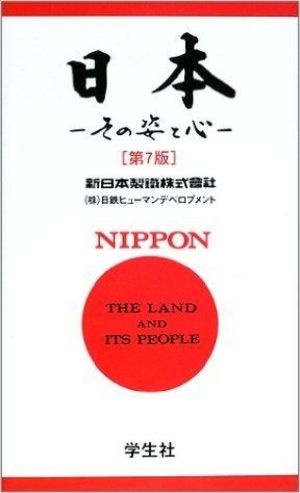
If you want to dig deeper into Japanese culture and history, there’s an excellent book available, titled "NIPPON The Land and Its People.” It covers a wide variety of topics on Japan, including geography, history, politics, economics, society, technology, and culture, and is available in both Japanese and English (This is part two of a two-part article. Clike here for the first one.)
Here are a few of the more popular questions and answers:
--When and how did the “bushi”s government end?

By an intimidating show of force, Commodore Perry’s squadron arriving from the United States in 1853 forced the Tokugawa Shogunate to agree to abandon isolation and resume overseas trade and commerce. As the agreement (treaty) was seen as extremely unfair, the anti-shogunate forces exploited the discontent with the shogunate’s weak-kneed stance on the opening of the country and the one-sided treaty to join hands with the emperor and the imperial court, which had been waiting for a chance to resume power, and put pressure on the shogunate.
At this juncture, the shogunate, seeking to preserve the daimyo status of the House of Tokugawa, moved to restore political authority to the Emperor in 1867. In the following year, the powerful domains of the southwest took the lead in forming a new government under Emperor Meiji. This is known as the “Meiji Restoration of 1868.”
--How did political, economical, and social structures change after the Meiji Restoration?
The twenty-year period immediately following this transition saw the new Meiji Government implement a wide range of measures modeled on European examples and designed to set Japan on its way to becoming a modern nation. The warrior-farmer-artisan-tradesman caste system was abolished and the warrior class was deprived of its social and economic privileges.
Administrative innovations included the introduction of the cabinet system; the promulgation of a constitution which provided for independent legislative and judiciary branches of government and set forth the rights and obligations of the citizens; the establishment of an army modeled after that of Germany and a navy modeled after that of Britain; and various reforms in the system of local government.
On the economic side, the system of land ownership was revised, modern industries were promoted under direct government management, and uniform monetary system was instituted. Social and cultural reforms included the establishment of a modern system of education. Thus, vigorous measures were taken to assimilate Western culture into the Japanese social structure.
-- What does the rising sun mean on the national flag?
The national flag of Japan is called the Hi-no-Maru or the Nisshoki. Both words mean “the flag of the rising sun.” The sun is represented by a red circle at the center of a white field. The design had been used on shrine flags and banners for many years before being adapted to a flag for indicating the nationality of Japanese ships in the sixteenth century.
So well did the flag match the name of the country (meaning place from where the sun rises) that it was formally designated as the national flag for use on merchant ships in 1870. It became Japan’s national flag by law in 1999.
--What does Mononoaware and Mujo mean?
Among the words expressive of the aesthetic sense acquired by the Japanese over a long period of time, there are “mononoaware” and “mujo”.
Mononoaware is said to be one of the aesthetic notions of Heian dynasty literature and denotes the state of mind that feels sympathy and empathy for the object and becomes profoundly moved by its elegance and charms.
“Mujo” is a Japanese tendency to love and appreciate the beauty of things which are transient and ephemeral in nature, which under the influence of Buddhist thought since the medieval ages, became sublimed in a peculiarly Japanese sense of values. The Japanese fondness for the short-lived cherry blossoms might be an example of this.
--What sort of religion is Shinto?
Shinto is the natural indigenous religion of Japan. Shinto gods, or kami, are worshipped at shrines (jinja). Country towns and villages worship guardian gods. All natural objects and phenomena used to be considered as having kami, so the gods of Shito were uncountably numerous. Gradually, Shinto practice extended to the worship of ancestors. Accordingly, then, there were no specific leaders in Shinto religion, nor any books of scripture.
--What is Zen and Zazen?
The Zen sect is one of the denominations of Buddhism. “Zen” is defined as an enlightened religious and mental state attained by striving to achieve spiritual awakening and serenity of mind. One of the practices used to obtain this serenity of mind is called zazen or “sitting in silent meditation.”
Eisai, Dogen, and other Japanese priests introduced the Zen sect to Japan in the twelfth and thirteenth centuries after studying in China.
According to the Zen sect, truth is something which transcends the expressions of language and letters. It can only be grasped through the direct proof of experience obtained in the practice of zazen. The Zen sect has become the backbone of the samurai spirit, tea cult, and ikebana or Japanese flower arrangement. It has exerted great influence on Japanese thought, culture, and literally all aspects of Japanese life.
